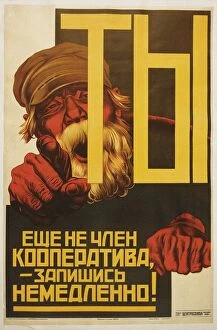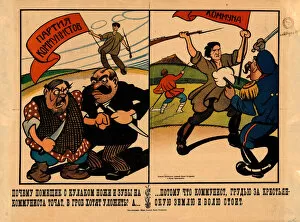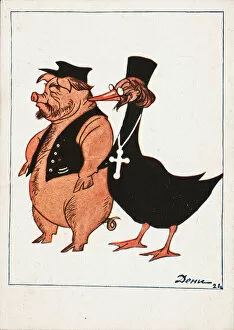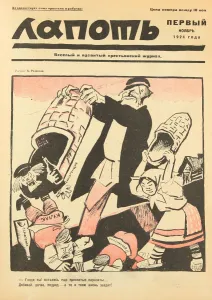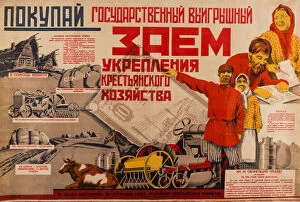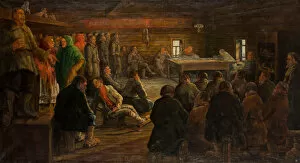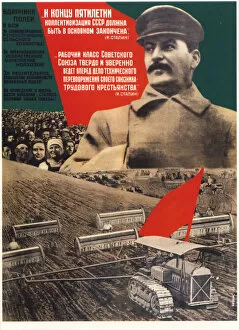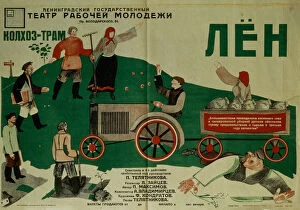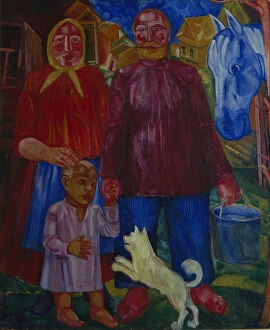Collectivisation Campaign Collection
The collectivisation campaign of the early 20th century was a tumultuous and controversial period in Soviet history
For sale as Licensed Images
Choose your image, Select your licence and Download the media
The collectivisation campaign of the early 20th century was a tumultuous and controversial period in Soviet history. As landowners and kulaks sharpened their knives and teeth, tensions rose in 1920. The artwork by Deni (Denisov) titled "Kulak-bloodsucker: What do I care about the hungry?. " depicted the callousness of these wealthy individuals towards the plight of the starving masses. In the mid-1920s, owners were targeted as parasites, with satirical journals like Lapot proclaiming, "Down with the damned parasites. " The movement gained momentum as more people were urged to join cooperatives through posters such as "You are not yet a member of the cooperative - sign up immediately. " from 1927-1928. To strengthen peasant economy, a State Winning Loan was introduced in 1928. Propaganda encouraged peasants to invest in this initiative for collective prosperity. By early 1930s, kolkhoz meetings became common where decisions regarding collectivisation were made collectively. A poster by Klutsis in 1932 emphasized that collectivisation should be completed within five years according to ambitious plans set forth by authorities. Meanwhile, theatre plays like Flax portrayed themes related to agricultural development during this time. Artists also captured social dynamics during this era; Palmov's painting "The Family of Serednyaks" showcased how ordinary families adapted to changing circumstances brought about by collectivisation. Despite its controversies and challenges faced along the way, collectivisation aimed at transforming agriculture into a communal effort for greater productivity and equality among peasants.

